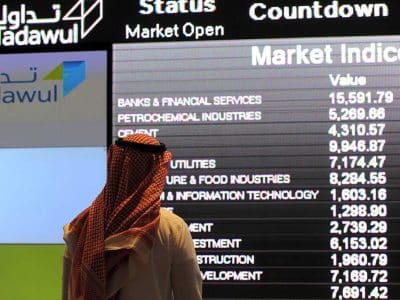Crude fell more than $2 a barrel on Monday after rating agency Standard & Poor’s downgraded the United States’ top-tier credit rating, raising concerns on the outlook for demand in the world’s biggest oil consumer.
Markets are on edge following the US credit downgrade to AA-plus and fears of Europe being unable to battle a debt crisis and prevent it from spreading. Aiming to calm investors, the Group of Seven major industrialised nations expressed trust in US Treasuries and steps by the European Central Bank to halt financial market contagion.
“The cost of borrowing will increase in the US as a result of the downgrade,” said Ken Hasegawa, a commodity derivatives manager at Japan’s Newedge brokerage. “The United States will have to tighten money flow to reduce its deficit. That may lower consumption by people in the country, reducing oil demand.”
US oil fell as low as $83.68 a barrel and traded at $84.22 by 0143 GMT, posting losses for five of the last six trading sessions. Brent slumped as much as $106.20, the lowest since the close of June 27, and traded at $106.54.
US oil is down around 8 percent this year compared with a rise of 15 percent last year, swinging between a high of $114.83 a barrel and a low of $82.87, and about 43 percent lower than the all-time high of $147.27 touched in 2008. Brent has gained 12.5 percent, staying between $127.02 and $92.37, against an increase of 22 percent last year.
Hasegawa said US oil would trade in the range of $80-$90 a barrel in coming months, with a downtrend continuing and hinging on economic indicators from major economies such as the United States and the dollar. Brent would trade around $100-$110 a barrel, he said.
Brent would revisit the August 5 low of $104.30 per barrel, as a medium-term downtrend is expected to develop more, while a bearish target at $81.35 is unchanged for US oil as a wave “3” of a downward wave “C” has not been completed, according to Reuters technical analyst Wang Tao.
Investors on Monday struggled to ascertain the impact of the downgrade on the financial system, from mortgages to banks to markets that rely on US Treasuries for collateral.
US stock index futures opened sharply lower in the first trading in domestic equities after the downgrade on concerns the move was likely to raise borrowing costs for the American government, companies and consumers.
Standard and Poor’s sought to assure global investors that its downgrade of the United States would have no immediate impact on sovereign borrowers in the Asia-Pacific. But the agency said a fresh global financial crisis could hurt some Asian sovereigns harder this time around.
Asian shares fell and the dollar languished near a record low against the Swiss franc, while gold powered to another record just short of $1,690 an ounce.
Many downplayed the likelihood of the sort of financial contagion experienced when Lehman Brothers went under in September 2008. Few had expected it to have to file for bankruptcy, and few were prepared for the fallout.
“Yes, the downgrade has some implications, no doubt about it,” said Jonathan Barratt, managing director at Commodity Broking Services in Sydney. “But it is one ratings agency, and it is nothing too much. The fall in prices is a knee-jerk reaction by Asia.”
US Treasury debt is as safe as it was before the downgrade and Congress’ “damaging” debate over raising the country’s debt limit, Treasury Secretary Timothy Geithner said on Sunday. He also criticised the move.
US 30-year long bond futures fell moderately at the start of electronic trade in Asia. The 30-year T-bond future fell 12/32 in price to 131-26/32.
In Europe, political and financial leaders gave their first sign of readiness to battle the debt crisis with the European Central Bank signalling it would start buying Italian and Spanish debt.







